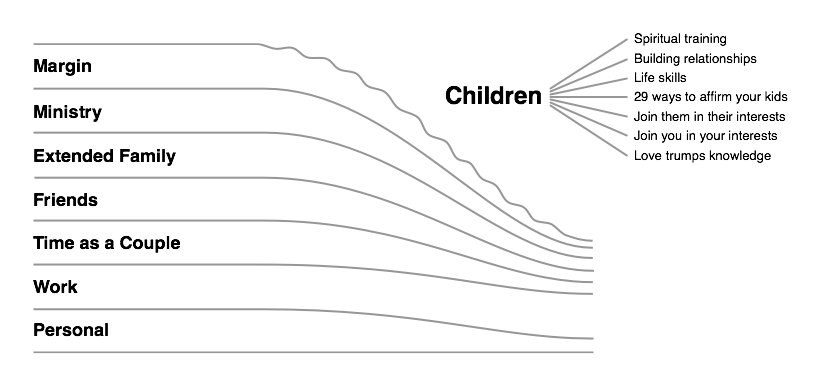The next two categories in the “Children” section are Join them in their interests and Join you in your interests. As my friend Greg Despres says, “Kids spell love T-I-M-E.” Join your son in a Lego building project. Join your daughters in a tea party. When you see your teenager shooting hoops, go out and challenge him to a game of HORSE. You may be thinking, “I haven’t developed that kind of relationship. I don’t think my son would want me to join him.” It is never too late to start. Persist in joining your kids in their interests, but persist in a way that is winsome and inviting.
But this is not only about the children’s interests. Have them join you in your interests. Include your kids in the things you like to do. It teaches them new skills. It teaches them to cooperate with you as not all of the time decisions revolve around their interests.
Even when it would be easier to just do it yourself, find the situations where they can be included. Take you kids along on your errands to the Home Depot. Take them fishing even it they are afraid to touch the worms. Have them help you in the garden. Teach your grade-schooler to play chess. In short, include them in your interests.
Last Thanksgiving, I asked our kids and grandkids that were joining us for the holiday to bring some work clothes along. Wednesday evening, I announced our Thanksgiving schedule, “We will start with two hours of clearing dead wood in the forest behind our house.”  We had taken down some trees lost in the previous summer’s drought and I needed some help cutting them up and getting them to the burn pile. And since a chain saw is my favorite tool, they were definitely joining me in my interest. (See photo.) Of course, the reward for their effort was a complete Thanksgiving dinner and the honor of beating their mom and dad in a game of Trivial Pursuit.
We had taken down some trees lost in the previous summer’s drought and I needed some help cutting them up and getting them to the burn pile. And since a chain saw is my favorite tool, they were definitely joining me in my interest. (See photo.) Of course, the reward for their effort was a complete Thanksgiving dinner and the honor of beating their mom and dad in a game of Trivial Pursuit.
What I am trying to say is that it works both ways. We make a great investment in our children when we join them in their interests and, likewise, have them join us in ours.

